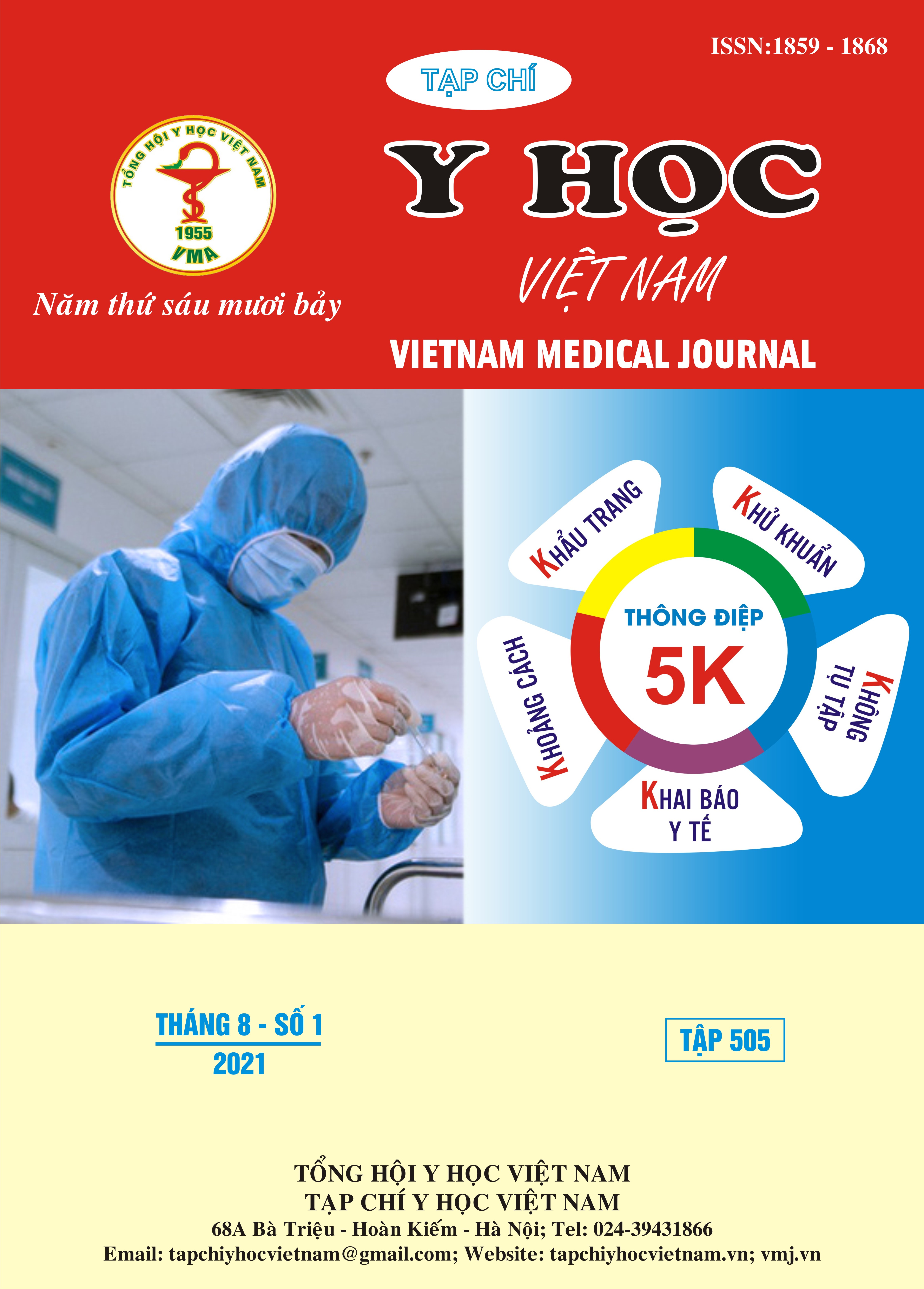EVALUATE THE EFFICACY OF FOLLICULAR LYMPHOMA PATIENTS WITH RITUXIMAB-CONTAINING REGIMEN AFTER 7 YEARS AT THE DEPARTMENT OF HEMATOLOGY, - CHO RAY HOSPITAL
Main Article Content
Abstract
Objectives: To evaluate the treatment effect of follicular lymphoma patients with rituximab-containing regimen at the Department of Hematology, Cho Ray Hospital from 2014 to 2021. Subjects and methods: Descriptive, prospective, and retrospective study of a series of CD20 (+) follicular lymphoma patients diagnosed and treated according to rituximab-containing regimens at the Department of Hematology - Chong Hospital from January 2014 to July 2021. Results: Through the study of 54 patients with follicular lymphoma, we initially recorded the following results: the mean age of the patient was 54 years old (from 26 to 83 years old). Male/Female ratio: 1:1.08. The majority of patients hospitalized in the late stage of disease (stage III-IV - 72,2%). Classification of risk according to FLIPI: low, medium, and high-risk groups are 22,2%, 29,6%, and 48,1%, respectively. Patients with B symptoms accounted for 59,3%. The disease manifests mainly in the lymph nodes (72,2%), the spleen (25,9%), marrow invasion (20,4%), and in other organs: duodenum, small intestine, large intestine, cavity ophthalmic. All patients were treated with rituximab-containing regimen including RCHOP (72,2%), RB (20,4%), RCVP (3,7%) and Rituximab monotherapy (3,7%). Overall response rate was 98,1% (complete response - CR was 79,6%, partial response - PR was 18,5%). The mean overall survival time was 71,5 months ± 4,3 months. The 7-year overall survival probability is 73,3 % ± 8,1%. The mean progression-free survival was 34,4 months (4 months – 84 months). The probability of 7-year progression-free survival was 49,1% ± 1,19%. Conclusion: The treatment of follicular lymphoma patients with rituximab-containing regimen achieved a high response rate.
Article Details
Keywords
rituximab, follicular lymphoma
References
2. Morton L. M., Wang S. S., Devesa S. S., et al. (2006). "Lymphoma incidence patterns by WHO subtype in the United States, 1992-2001". Blood, 107 (1), 265-76.
3. Salles G., Seymour J. F., Offner F., et al. (2011). "Rituximab maintenance for 2 years in patients with high tumour burden follicular lymphoma responding to rituximab plus chemotherapy (PRIMA): a phase 3, randomised controlled trial". Lancet, 377 (9759), 42-51.
4. Sant M., Allemani C., Tereanu C., et al. (2010). "Incidence of hematologic malignancies in Europe by morphologic subtype: results of the HAEMACARE project". Blood, 116 (19), 3724-34.
5. Sarkozy C., Maurer M. J., Link B. K., et al. (2019). "Cause of Death in Follicular Lymphoma in the First Decade of the Rituximab Era: A Pooled Analysis of French and US Cohorts". J Clin Oncol, 37 (2), 144-152.
6. Schulz H., Bohlius J. F., Trelle S., et al. (2007). "Immunochemotherapy with rituximab and overall survival in patients with indolent or mantle cell lymphoma: a systematic review and meta-analysis". J Natl Cancer Inst, 99 (9), 706-14.
7. Siegel R. L., Miller K. D., Jemal A. (2019). "Cancer statistics, 2019". CA Cancer J Clin, 69 (1), 7-34.
8. Phan Minh Châu Lưu Hùng Vũ, Phạm Xuân Dũng (2018). "Khảo sát tình hình điều trị Lymphôm nang tại bệnh viện Ung bướu TPHCM". Tạp chí Ung thư học, 101-107.


